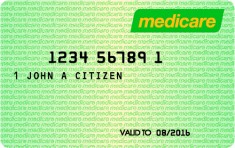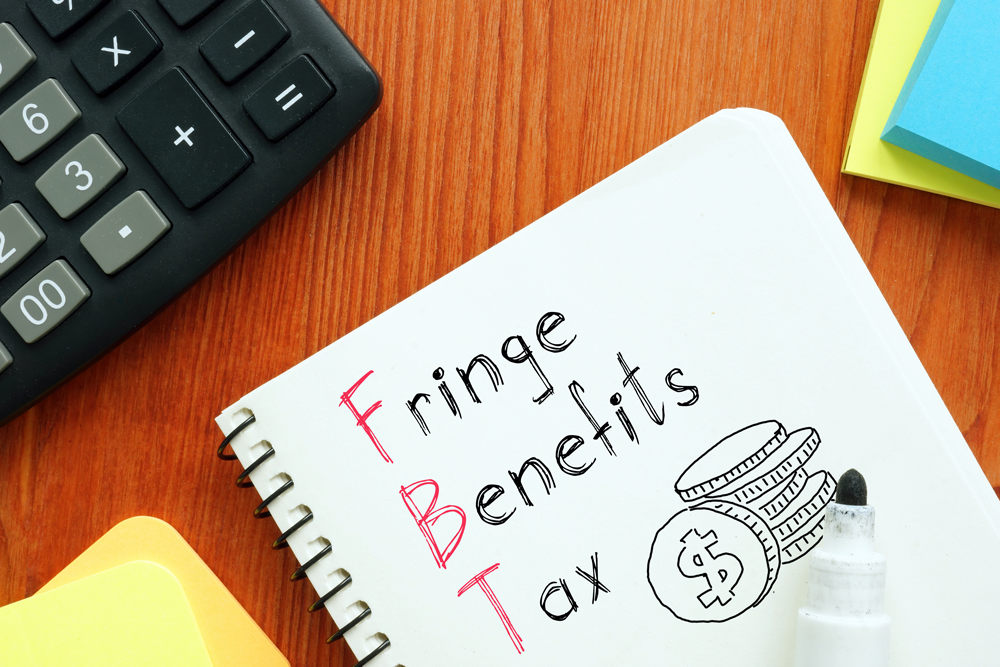Federal Budget Round Up 2018/19

The Treasurer, Scott Morrison handed down his third Federal Budget on Tuesday May 8th and there were no major surprises. In terms of the economy, the Budget deficit is forecast to drop to $14.5 billion in 2018/19 after hitting $18.2 billion in 2017/18. It is projected to hit a positive balance of $2.2 billion in 2019/20 before surpluses increase to $11 billion in 2020/21 and $16.2 billion in 2021/22.
Unemployment is forecast to be 5.25% down from 5.5% in 2017/18 and projected to fall again to 5% in 2021/22. Inflation at 2.25% in 2018/19, up from 2% in 2017/18. It is projected to hit 2.5% next year and remain there for the following two years.
Key objectives of the Budget were:
- To generate opportunities for businesses and workers
- Continued economic and employment growth
- Reductions in tax payable for low to middle income earners
- A fairer tax system by cracking down on the cash economy
- A balanced budget in two years and then moving to surplus budgets to repay national debt
- A more competitive economy with enhanced export potential
- More aged care facilities and pensioner benefits
INDIVIDUALS
1. The Government’s Three Stage Personal Income Tax Plan

The Government is introducing a 7-year Personal Income Tax Plan that will be rolled out in three stages. The first stage of the Tax Plan will provide Australian resident low and middle-income earners with a non-refundable tax offset of up to $530 per annum. The offset will be received as a lump sum on assessment after an individual lodges their tax return. The offset will be available from 2018/19 through to 2021/22.
- For Low and Middle-Income Earners with taxable incomes of $37,000 or less, the tax offset will provide an annual benefit of up to $200.
- For Low and Middle-Income Earners with taxable incomes between $37,001 and $48,000, the value of the tax offset will increase at a rate of 3 cents per dollar to the maximum annual benefit of $530.
- Taxpayers with Taxable Incomes from $48,001 to $90,000 will be eligible for the maximum annual benefit of $530.
- For taxpayers with taxable incomes from $90,001 to $125,333, the offset will be phased out at a rate of 1.5 cents per dollar earned in excess of $90,000.
Importantly, the Government has proposed the Low and Middle-Income Tax Offset is in addition to the current Low-Income Tax Offset.
Stage 2: Preventing Bracket Creep
The Government has proposed the following tax rates for individuals:
| Marginal Tax Rate |
Current 2017/2018 Income |
Proposed 2018/19 |
| 0% |
$0 -$18,200 |
$0 -$18,200 |
| 19% |
$18,201
- $37,000 |
$18,201
- $37,000 |
| 32.5% |
$37,001 - $87,000 |
$37,001 - $90,000 |
| 37% |
$87,001 - $180,000 |
$90,001 - $180,000 |
| 45% |
$180,001+ |
$180,001+ |
As the table illustrates, from 1 July 2018, the top taxable income threshold of the 32.5% personal income tax bracket will be increased from $87,000 to $90,000.
From 1 July 2022, the top taxable income threshold for the 32.5% personal income tax bracket will be increased from $90,000 to $120,000. The top taxable income threshold for the 19% personal income tax bracket will be increased from $37,000 to $41,000
From 1 July 2022, the Low-Income Tax Offset will be increased from $445 to $645.
Stage 3: Removal of the 37% Tax Bracket Entirely

From 1 July 2024 the Government will simplify and flatten the personal tax system by removing the 37% tax bracket altogether by increasing the top taxable income threshold of the 32.5% personal income tax bracket from $120,000 to $200,000. This is in recognition of inflation and wage growth. The new 32.5% tax bracket will incorporate taxable incomes from $41,001 to $200,000. Taxpayers with taxable incomes exceeding $200,000 will pay the top marginal tax rate of 45%. That is, the top marginal tax rate will be payable on taxable incomes from $200,000 instead of the current $180,000.
2. The Medicare Levy

The Government will retain the Medicare levy rate at 2% of taxable income for eligible taxpayers and not increase it to 2.5% as previously proposed to assist in funding the NDIS. Changes to other tax rates that are linked to the top personal tax rate, such as the fringe benefits tax rate, will also not proceed.
The Government will increase the Medicare levy low-income thresholds for singles, families, seniors and pensioners from the 2017/18 income year as follows:
- The threshold for singles will be increased from $21,655 to $21,980.
- The family threshold will be increased from $36,541 to $37,089.
- The Single seniors and pensioners threshold will increase from $34,244 to $34,758.
- The family threshold for seniors and pensioners will increase from $47,670 to $48,385.
- The family income thresholds increase by a further $3,406 for each dependent child or student (increased from $3,356).
3. Taxation of High Profile Individuals
From 1 July 2019, the Government will ensure that high profile individuals will no longer be able to take advantage of lower tax rates by licencing their fame or image to another entity. Under the current tax environment, high profile individuals such as sports people and actors can licence their fame or image to another entity such as a related company or trust. All income derived under this licence is assessable income to the entity that holds the licence. This has allowed these individuals to spread their income to decrease the rate of tax paid. The new proposal will ensure that all remuneration, including payments and non-cash benefits provided for the commercial exploitation of a person’s fame or image, will be included in the assessable income of that individual.
BUSINESS

1. Extending The $20,000 Instant Asset Write-Off by Another 12 Months
The government will extend the current $20,000 instant asset write-off available for small business entities (i.e. businesses with an aggregated turnover of less than $10 million). Small business entities will now be able to immediately deduct the cost of most new or second hand depreciating assets bought and used (or installed ready for use) in the business before 30 June 2019 – provided the asset costs less than $20,000. Only a few assets are not eligible (such as horticultural plants and in-house software).
Whether GST should be included in working out whether the threshold is met depends on whether the purchaser is registered for GST or not:
- If the purchaser is registered for GST – the GST exclusive amount is the cost of the asset; and
- If the purchaser is not registered for GST – the GST inclusive amount is the cost of the asset.
However, assets costing $20,000 or more can be pooled in a general small business pool, treated as a single depreciating asset and depreciated at:
- 15% for such assets acquired in the first income tax year; or
- 30% each income year thereafter.
If the balance in the pool is less than $20,000, the pool can be immediately deducted.
After 30 June 2019 (i.e. from 1 July 2019) the immediate deductibility threshold will revert to $1,000 (as opposed to the current $20,000).
2. Introduction of Economy-Wide Cash Payment Limit

From 1 July 2019, the Government will introduce a limit of $10,000 for cash payments made to businesses for goods and services. Currently, undocumented cash payments are used to evade tax and to launder money derived from criminal activity. To ensure a transparent audit trail is retained for large payments, the Government has proposed from 1 July 2019 a $10,000 limit for cash payments made to businesses. Payments in excess of the $10,000 limit will only be permissible by electronic transfer (e.g. direct debit, BPAY, PayPal) or by cheque.
The restriction will not apply to transactions involving financial institutions e.g. banks, nor will it apply to consumer-to-consumer non-business transactions.
3. Further Expansion of Taxable Payments Reporting

Currently, under the Taxable Payments Reporting System (TPRS), businesses in the building and construction industry are required to report payments to contractors to the ATO. These measures were introduced to target the ‘black’ or cash economy and are designed to reduce the incidence of tax evasion by contractors. The 2017 Budget extended the TPRS to the cleaning and courier industries with effect from 1 July 2018. From 1 July 2019 the Government has proposed to expand the TPRS to include businesses in the following industries:
- Security providers and investigation services;
- Road freight transport; and
- Computer system design and related services.
Businesses will be able to report the payments to the ATO via an online portal.
4. Removing Tax Deductibility of Payments Where Withholding
 Obligations Not Met
Obligations Not Met
From 1 July 2019, businesses will no longer be able to claim a deduction for the following payments:
Payments to their employees such as wages where they have not withheld any amount of PAYG from these payments (i.e. despite the fact the PAYG withholding requirements apply).
Payments made by businesses to contractors where the contractor does not provide an ABN and the business does not withhold any amount of PAYG (despite the withholding requirements applying).
COMPANIES
1. Phoenix Activity

Phoenix activity is where companies are deliberately gutted of assets and income to pay their debts to the ATO and other creditors including employees. This activity has come at a great cost to the Australian community with the flow on effect of the Government not receiving the tax revenue to fund services and businesses collapsing because they have not been paid by the phoenix companies.
Finally, the Government will implement measures to make the directors of these companies personally liable. The corporations law and the tax law will be amended to make the deliberate avoidance of paying debts illegal. The new measures will target:
- People who conduct or facilitate illegal phoenix activities.
- Directors deliberately backdating resignations to avoid liability or prosecution.
- Restrict the ability of related creditors to vote on a company to be liquidated.
- Directors to pay the avoided debts including income tax, GST and luxury car tax.
- Tax refunds which will not to be paid by the ATO.
The Budget papers do not announce a commencement date as yet.
2. Division 7A Changes
 Division 7A is an extremely complicated provision in the tax law whereby loans usually made by private companies to their shareholders are
taxed as unfranked dividends unless the loan is reflected in a complying loan agreement by a certain time. What makes this provision even
more complicated is the interaction of the unpaid present entitlements (UPE) rules (i.e. where a trust declares a distribution to a related
company but does not pay the distribution) with these deemed dividend provisions.
Division 7A is an extremely complicated provision in the tax law whereby loans usually made by private companies to their shareholders are
taxed as unfranked dividends unless the loan is reflected in a complying loan agreement by a certain time. What makes this provision even
more complicated is the interaction of the unpaid present entitlements (UPE) rules (i.e. where a trust declares a distribution to a related
company but does not pay the distribution) with these deemed dividend provisions.
In last year’s Budget, the Government proposed some new rules to Division 7A (e.g. a self-correction mechanism if Division 7A was inadvertently triggered, new safe harbour rules and a new option of a single compliant loan of 10 years) that were due to apply from 1 July 2018. In this budget the Government extended the start date of these measures to 1 July 2019.
From 1 July 2019, the Government will ensure that unpaid present entitlements (‘UPEs’) come within the scope of Division 7A of the Tax Act. This will apply where a related private company is made entitled to a share of trust income as a beneficiary but has not been paid. This measure will ensure the UPE is either required to be repaid to the private company over time as a complying loan under Section 109N of the Tax Act or is subject to tax as a dividend.
3. Changes to the Research & Development Incentive
 The
government intends to make the following important changes to the research and development (R&D) tax incentive:
The
government intends to make the following important changes to the research and development (R&D) tax incentive:
- Increase the maximum amount of R&D expenditure eligible for the 43.5% refundable offset (for companies with turnover of less than $20 million) or 38.5% non-refundable offset (for companies with turnover of $20 million or more) from $100 million to $150 million;
- For companies with an aggregated annual turnover of $20 million or more, the Government will introduce a marginal R&D premium that ties the rates of the 38.5% non-refundable offset to the amount of R&D expenditure incurred by a company (e.g. can qualify for a higher R&D incentive if the company does more R&D activities);
- For companies with aggregated turnover below $20 million, the refundable R&D tax offset will be a premium of 13.5 percentage points above a company’s tax rate.
- Cap cash refunds from the refundable offset to $4 million per year (Note: R&D tax offsets in excess of the $4 million will be carried forward and become non-refundable tax offsets in future years);
- Publicly disclose claimant details and the R&D expenditure they have claimed.
Currently only R&D expenditure up to $100 million qualifies for either the 43.5% or 38.5% offset – expenditure in excess of $100 million will only qualify for a tax offset equal to the company tax rate (i.e. 30% or 27.5%). Under the proposal, an extra $50 million of expenditure (i.e. the difference between $150 million and $100 million) will qualify for higher offsets.
The introduction of the marginal R&D premium will benefit businesses with an aggregated turnover of $20 million or more with substantial R&D activities because such businesses will qualify for the higher offsets. This will be based on the incremental intensity of R&D expenditure as a proportion of total expenditure for the year.
Businesses that qualify for refundable offsets of more than $4 million per year will lose the cash refund mechanism on the excess amounts because such excess refunds will become non-refundable in future years. Note, however, that refundable offsets from R&D expenditure on clinical trials will not count towards the cap.
TRUSTS
1. Children’s Income from Testamentary Trusts
 From 1 July 2019, the Government intends to change the law so that the adult tax rates and the tax-free threshold available to children in
receipt of certain income from testamentary trusts (a trust arising from the will of a deceased person) will be limited. Limiting
access to the adult tax rates for minors will mean that only income derived from assets or funds arising from the deceased person’s estate
will be taxed concessionally.
From 1 July 2019, the Government intends to change the law so that the adult tax rates and the tax-free threshold available to children in
receipt of certain income from testamentary trusts (a trust arising from the will of a deceased person) will be limited. Limiting
access to the adult tax rates for minors will mean that only income derived from assets or funds arising from the deceased person’s estate
will be taxed concessionally.
This means that if other persons later add funds to the testamentary trust, the income from these new funds will be taxed at the normal tax rates for minors in receipt of passive income, e.g. where the income exceeds $416, tax is payable on the whole of the child’s income at 45% plus Medicare Levy. The measure will clarify the position on the taxation of income received by minors from testamentary trusts.
2. Stopping Circular Family Trust Distributions
From 1 July 2019, the Government will extend a specific anti-avoidance rule to family trusts that applies to other closely held trusts that engage in circular trust distributions.
Currently, where family trusts act as beneficiaries of each other in a ‘round robin’ arrangement, a distribution can be ultimately returned to the original trustee — in a way that avoids any tax being paid on that amount. This measure will better enable the ATO to pursue family trusts that engage in these arrangements by extending the specific anti-avoidance rule, imposing tax on such distributions at a rate equal to the top personal tax rate plus the Medicare levy.
PARTNERSHIPS
Increased difficulty for partners to access small business CGT concessions
From 8 May 2018, partners who alienate their partnership income by creating, assigning or otherwise deal in rights to the future income of the partnership will no longer be able to qualify for small business CGT concessions in relation to these rights.
Partners of partnerships will no longer be able to inappropriately access these small business CGT concessions when they assign their right to the future income of the partnership to an entity that does not have any role in the partnership.
SUPERANNUATION

1. Three-Yearly Audit Cycle for Some SMSFs
From 1 July 2019, the Government will change the annual audit requirement to a three-yearly requirement for SMSFs with a history of good record-keeping and compliance. This measure will reduce red tape for SMSF trustees that have a history of three consecutive years of clear audit reports and that have lodged the fund’s annual returns in a timely manner.
2. Increasing the Maximum Number of Members in a SMSF and Small APRA fund
From 1 July 2019, the Government will increase the maximum number of allowable members in new and existing SMSFS and small APRA funds from four to six. This is a welcomed change for larger families where five or six family members wish to join the same SMSF or small APRA fund; such families will no longer be compelled to establish a new superannuation fund.
3. Work Test Exemption for Voluntary Contributions

From 1 July 2019, the Government intends to introduce a new exemption from the work test for persons aged 65 to 74 years of age with superannuation balances below $300,000 in the first year following their inability to meet that test. This will enable them to make voluntary superannuation contributions in respect of that year. Currently, superannuation fund members aged between 65 and 74 years of age must work for a minimum of 40 hours in a 30-day period in order to be eligible to make voluntary superannuation contributions.
4. Preventing Inadvertent Concessional Cap Breaches by Certain Employees
Following the reduction in the concessional superannuation contributions cap to $25,000 from 1 July 2017, many employees with incomes in excess of $263,157 may breach the concessional superannuation contribution cap of $25,000 per annum. From 1 July 2018, the Government will allow individuals whose income exceeds $263,157, and who have multiple employers, to nominate that their wages from certain employers are not subject to the superannuation guarantee (SG). The measure will allow eligible individuals to avoid unintentionally breaching the $25,000 annual concessional contributions cap as a result of multiple compulsory SG contributions. Employees who use this measure could negotiate to receive additional income, which is taxed at marginal tax rates.
5. Deductions for Personal Contributions

The Government intends to improve the integrity of the ‘notice of intent’ (‘NOI’) processes for claiming personal superannuation contribution tax deductions. Currently, some individuals receive deductions on their personal superannuation contributions but do not submit a NOI, despite being required to do so. This results in their superannuation funds not applying the appropriate 15% tax to their contribution. As the contribution has been deducted from the individual’s income, no tax is paid on it at all.
The additional funding will enable the ATO to develop a new compliance model, and to undertake additional compliance and debt collection activities. From 1 July 2018, the ATO will modify income tax returns to alert individuals to the NOI requirements with a tick box to confirm they have complied.
6. Capping Passive Fees, Banning Exit Fees and Reuniting Small and Inactive Accounts
From 1 July 2019, the Government will introduce a 3% annual cap on passive fees charged by superannuation funds on accounts with balances below $6,000 and will ban exit fees on all superannuation accounts. The Government will also strengthen the ATO-led consolidation regime by requiring the transfer of all inactive superannuation accounts where the balances are below $6,000 to the ATO’s ‘lost super’ facility.
The ATO will expand its data matching processes to proactively reunite these inactive superannuation accounts with the member’s active account, where possible. Furthermore, the government’s ban all exit fees will enable members to easily switch superannuation funds and will encourage superannuation funds to be more competitive in their offerings to their members.
7. Insurance in Superannuation No Longer Automatic

Currently, superannuation funds belonging to people under 25 and those with low superannuation balances are often eroded by insurance premiums. Many superannuation funds automatically opt-in all of their members to insurances such as life insurance so the Government intends to introduce legislation from 1 July 2019 so that superannuation funds will not be able to automatically deduct insurance premiums from a member’s account of these member accounts:
- members under 25 years of age; or
- members with low superannuation fund balances - less than $6,000; or
- members who have had no superannuation contributions made within 13 months.
OTHER TAX CHANGES

Deny Deductions for Vacant Land
From 1 July 2019 The Government will deny deductions for expenses (e.g. interest costs and rates) associated with holding vacant land (for either commercial or residential purposes) where such land is not genuinely held for the purpose of earning assessable income.
Furthermore, the Government also intends to reduce the tax incentives that are currently available for land banking (i.e. where land may not be used for housing or other development).
However, there will be no denial of such a deduction of expenses incurred after:
- A building has been constructed on the vacant land, the building has received approval to be occupied and is available for rent; or
- The vacant land is being used by the owner to carry on a business (e.g. a business of primary production).
Tax deductions that have been denied in respect of vacant land will not be able to be carried forward for use in later years. Depending on the nature of the expense, the expense may not be included in the cost base of the vacant land when calculating any capital gain upon the land’s disposal. However, expenses such as borrowing expenses and council rates may be included in the cost base of the vacant land.
This article forms part of our June 2018 Business Accelerator Magazine. Click HERE to download the full edition or browse other articles in this edition below:
Other Articles in this Edition:
- Thinking of Starting A Business?
- Looking for More Traffic to Your Website?
- Don't Leave Profit on the Table
IMPORTANT DISCLAIMER: This article contains general advice only and is prepared without taking into account your particular objectives, financial circumstances and needs. The information provided is not a substitute for legal, tax and financial product advice. Before making any decision based on this information, you should speak to a licensed financial advisor who should assess its relevance to your individual circumstances. While the firm believes the information is accurate, no warranty is given as to its accuracy and persons who rely on this information do so at their own risk. The information provided in this article is not considered financial product advice for the purposes of the Corporations Act 2001.





